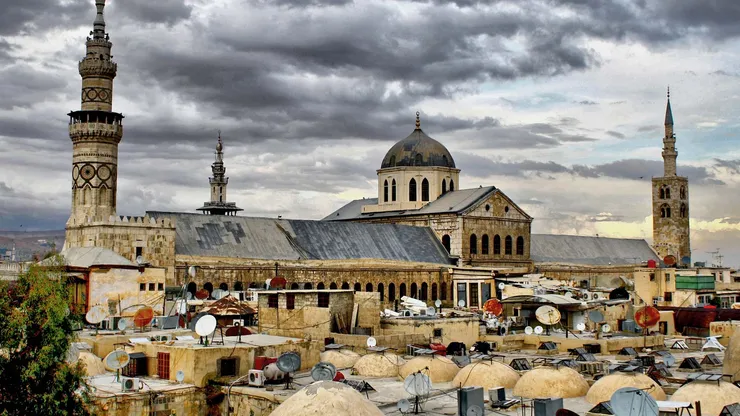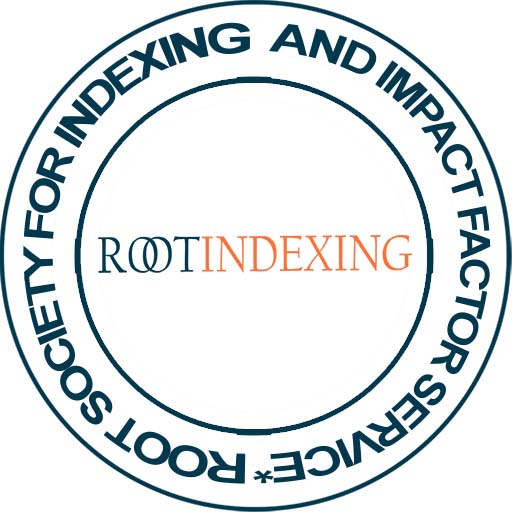A COMPARATIVE ANALYSIS OF THE FINANCIAL POLICIES DURING THE PIOUS CALIPHATE AND THE UMAYYADS RULE
DOI:
https://doi.org/10.5281/zenodo.10598612Keywords:
Finances, Economy. Pious Caliphs, Umayyad RuleAbstract
The study of financial policies during the prophetic era, pious caliphal period, and Umayyad rule provides insights into the economic foundations of early Islamic civilization. The prophetic age prioritized fair commerce, social welfare, and charity. The pious caliphal period saw the Rashidun Caliphs consolidate administrative systems and implement financial policies for social welfare and economic justice. The Umayyad rule introduced complex financial systems and policies, influenced by pre-Islamic traditions and evolving Islamic economic principles. This analysis aims to clarify the continuity, changes, and adaptations in the economic frameworks that led to the development of Islamic culture and the lasting impact of these early financial policies on modern Islamic economic theory and practice.
References
Wijdan Ali, The Arab Contribution to Islamic Art (Cairo: The American University Press, 1999), 48. Cf. Jere L. Bacharach, Islamic History Through Coins: An Analysis and Catalogue of (Cairo: The American University Press, 2006), 45.
Syed Abdul Qadir Husaini, Arab Administration (Delhi: Idara-I Adabiyat-I, 1976), 86.
Ibid., 86-87.
Ibid., 86.
Ibid.
Ibid.
Luke Treadwell, “Abd al-Malik's Coinage Reforms: The Role of the Damascus Mint”,Revue numismatique 6, No. 165 (2009): 365.
Ibid. 365.
Ibid.
Ibid., 372.
Ibid., 365-366.
Hiroyuki Yanagihashi, A History of the Early Islamic Law of Property: Reconstructing the Legal Development, 7th-9th Centuries (Boston: BRILL, 2004), 230. Cf. Muir, William. The Caliphate and its Rise, Decline and Fall. London: The Religious Tract Society, 1892), 350.
John Walker, A Catalogue of the Arab-Sassanian coins Umaiyad governors in the east, Arab-Ephthalites, 'Abbāsid governors in Tabaristān and Bukhārā (London: British Museum, 1941), viii.
Abd al-Aziz Darwish Hakiem, “A critical and comparative study of early Arabian coins on the basis of Arabic textual evidence and actual finds” PhD diss., University of Leeds, 1977. 186-187.
Husaini, Arab Administration, 86.
Ibid.
Ibid.
Ibid.
Husaini, Arab Administration, 84-85.
Hakiem, “A critical and comparative study of early Arabian coins on the basis of Arabic textual evidence and actual finds” 190-191.
Husaini, Arab Administration, 18.
Muhammad Ali Alkhuli, A Dictionary of Islamic Terms (Amman: Dar Al Alfalah Publishers, 1989), 80.
Husaini, Arab Administration, 21.
The Qur’an, 9:29.
W. Hughes, Aaron. Muslim Identities: An Introduction to Islam (New York: Columbia University Press, 1983), 230, 243.
The Qur’an, 2:43.
W. Hughes, Aaron. Muslim Identities: An Introduction to Islam (New York: Columbia University Press, 1983), 540.
The Qur’an, 2:265.
Husaini, Arab Administration, 23.
Hughes, Dictionary of Islam, 630.
Ibid., 631.
Husaini, Arab Administration, 24-25.
Ibid., 93.
Al- Baladhuri, Aḥmad ibn Yaḥya. Al Futuh al-Buldan. Cairo: Maktabat al-Tijariyyah al-Kubra, 1959), 93.
Ibid.
Husaini, Arab Administration, 23, 114.
Ibid.
Al-Baladhuri, The Origins of the Islamic State: Kitab Futuh al-Buldan, 149.
Ibid., 106-107.
Mazhar-ul-Haq, A History of Early Islam: Study of the Rise, Expansion, and Development of the Islamic Society, State and Culture from 570 A.D. to 661 A.D. (Lahore: The University Book Agency, 1960), 288.
Husaini, Arab Administration, 40. Cf. Al-Baladhuri, The Origins of the Islamic State: Kitab Futuh al-Buldan, 98,
Ibid.
Al-Baladhuri, The Origins of the Islamic State: Kitab Futuh al-Buldan, 482.
Ibid.
Al-Baladhuri, The Origins of the Islamic State: Kitab Futuh al-Buldan, 125-126.
Muhammad Ibn Jarir Al-Tabari, The Crisis of the Early Caliphate, trans. Stephens Humphreys Vol. XV (New York: SUNY Press, 1990), 45.
Ibid
Muhammad Ibn Jarir al-Tabari, History of al-Tabari:Vol. XVIII, Between Civil Wars: The Caliphate of Mu’awiyah 661-680AH/40-60AH, trans. Michael Morony, (New York: SUNY Press, 1987), 15-16..
Muhammad Ibn Jarir al-Tabari, History of al-Tabari:Vol. XVIII, Between Civil Wars: The Caliphate of Mu’awiyah 661-680AH/40-60AH,15-16.
Ibid., 4-5.
Ibid., 5-6.
Ibid., 5.
Ibid
Ibid
Julius Wellhausen, The Arab Kingdom and Its Fall (London: Routledge, 2000), 137-138.
Husaini, Arab Administration, 117.
D. C. Dennet, Conversion and the Poll-Tax in Early Islam, Vol-22 (Harvard: Harvard University Press, 1950), 97-102.
Husaini, Arab Administration, 118, 119 & 122.
Haq A History of Early Islam: Study of the Rise, Expansion, and Development of the Islamic Society, State and Culture from 570 A.D. to 661 A.D., 435.
Wellhausen, The Arab Kingdom and Its Fall,457-458. Cf. Duri, Early Islamic Institutions: Administration and Taxation from Caliphate to the Umayyads and Abbasids, 120.
Duri, Abd al-Aziz. Early Islamic Institutions: Administration and Taxation from Caliphate to the Umayyads and Abbasids. New York: The Centre for Arab Unity Studies, 2011.113.
Ibid., 113.
Ibid.
Ibid., 114-115.
Ibid., 115.
Ibid., 113-114.
Ibid.
Al-Tabari, History of al-Tabari:Vol. XVIII, Between Civil Wars: The Caliphate of Mu’awiyah 661-680AH/40-60AH, trans. Michael Morony, (New York: SUNY Press, 2015), 200-201.
Al-Tabari, History of al-Tabari Vol-24: The Empire in Transition: The Caliphates of Sulayman, ‘Umar, and Yazid A. D. 715-724/A. H. 97-105, trans. David Stephens Powers (New York: SUNY Press, 2015.), 9.
Al-Tabari, History of al-Tabari Vol-23: The Zenith of the Marwanid House, trans. Martin Hinds (New York: SUNY Press, 2015.), 12.
Jalal ad-Din as-Suyuti, Tarikh al-Khulafa: History of Umayyad Caliphs, trans. T. S. Anderson (London: Taha Publishers), 35.
Duri, Early Islamic Institutions: Administration and Taxation from Caliphate to the Umayyads and Abbasids, 113.
Al-Tabari, The Zenith of the Marwanid, 64-65. Cf. Shiv Rai Chowdhry, Al-Hajjaj Ibn Yousuf: An Examination of His Works and Personality (Delhi: Delhi University Press, 1972), 189.
Ibid., 113-114.
Jalal ad-Din as-Suyuti, Tarikh al-Khulafa: History of Umayyad Caliphs, trans. T. S. Anderson (London: Taha Publishers), 35.
Duri, Early Islamic Institutions: Administration and Taxation from Caliphate to the Umayyads and Abbasids, 113.
Al-Tabari, The Zenith of the Marwanid, 64-65. Cf. Shiv Rai Chowdhry, Al-Hajjaj Ibn Yousuf: An Examination of His Works and Personality (Delhi: Delhi University Press, 1972), 189.

Downloads
Published
How to Cite
License
Copyright (c) 2023 AL MISBAH RESEARCH JOURNAL

This work is licensed under a Creative Commons Attribution 4.0 International License.
AL-MISBAH Research Journal is full open access and licensed under Creative Commons Attribution 4.0 International License; and Published by: Research Institute of Culture & Ideology (REINCI), Islamabad, Pakistan. This allows the research community and the general public to gain unlimited, free and immediate access to scholarly articles, and to reuse the content freely provided that proper attribution is given to the original authors.









